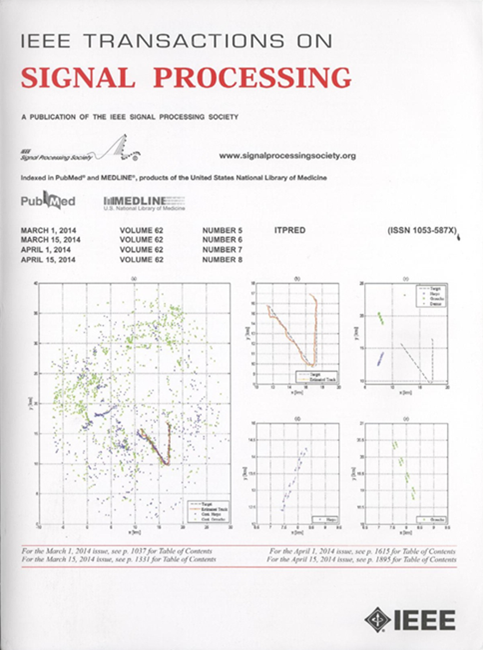Arithmetic Vs. Expected Mean of Probabilistic Asynchronous Affine Inference
IF 4.6
2区 工程技术
Q1 ENGINEERING, ELECTRICAL & ELECTRONIC
引用次数: 0
Abstract
Distributed execution of algorithms over various terminals is a topic that regains increasing popularity; when tolerance to failures is also required, asynchronous operation is brought to the light, while probabilistic asynchronous operation can model the probability of failure for each terminal. This work focuses on the probabilistic asynchronous affine update model, applicable in a wide range of inference algorithms, possibly executed over distributed terminals. The existing literature focuses on the asymptotic properties of the expected mean. Instead, this work offers the asymptotic analysis for the arithmetic mean, utilized for discovering fixed points, as it is the only quantity that can be practically offered experimentally. It is shown that the asymptotic behavior of the arithmetic mean is different than the expected mean's and a sufficient condition is provided for convergence of the arithmetic mean to a fixed point. The lack of necessity for this condition is explained and the subcases, where the arithmetic mean converges, diverges or has an unpredictable behavior, are distinguished. Additionally, cases where the individual iterations never converge (e.g., oscillate infinitely) but their arithmetic mean does and offers fixed point, are also highlighted. This is another concrete example of the arithmetic mean utility. Applications of the affine model are also briefly discussed. Finally, simulations corroborate theoretical findings for various affine model setups.概率异步仿射推理的算术与期望均值
算法在不同终端上的分布式执行是一个越来越受欢迎的话题;当还需要容错时,可以采用异步操作,而概率异步操作可以对每个终端的故障概率进行建模。这项工作的重点是概率异步仿射更新模型,适用于广泛的推理算法,可能在分布式终端上执行。现有文献主要关注期望均值的渐近性质。相反,这项工作提供了算术平均值的渐近分析,用于发现不动点,因为它是唯一可以在实验中实际提供的量。证明了算术均值的渐近性不同于期望均值的渐近性,并给出了算术均值收敛于不动点的充分条件。解释了这个条件的不必要性,并区分了算术平均值收敛、发散或具有不可预测行为的子情况。此外,个别迭代从不收敛的情况(例如,无限振荡),但它们的算术平均值确实并提供不动点,也被突出显示。这是算术平均效用的另一个具体例子。本文还简要讨论了仿射模型的应用。最后,模拟证实了各种仿射模型设置的理论发现。
本文章由计算机程序翻译,如有差异,请以英文原文为准。
求助全文
约1分钟内获得全文
求助全文
来源期刊

IEEE Transactions on Signal Processing
工程技术-工程:电子与电气
CiteScore
11.20
自引率
9.30%
发文量
310
审稿时长
3.0 months
期刊介绍:
The IEEE Transactions on Signal Processing covers novel theory, algorithms, performance analyses and applications of techniques for the processing, understanding, learning, retrieval, mining, and extraction of information from signals. The term “signal” includes, among others, audio, video, speech, image, communication, geophysical, sonar, radar, medical and musical signals. Examples of topics of interest include, but are not limited to, information processing and the theory and application of filtering, coding, transmitting, estimating, detecting, analyzing, recognizing, synthesizing, recording, and reproducing signals.
 求助内容:
求助内容: 应助结果提醒方式:
应助结果提醒方式:


